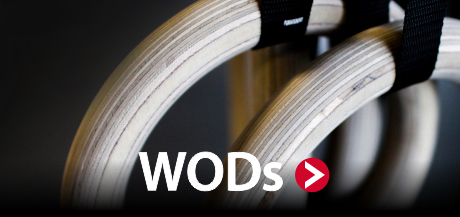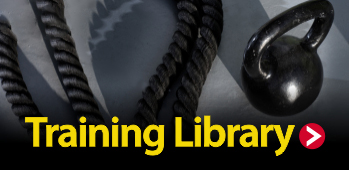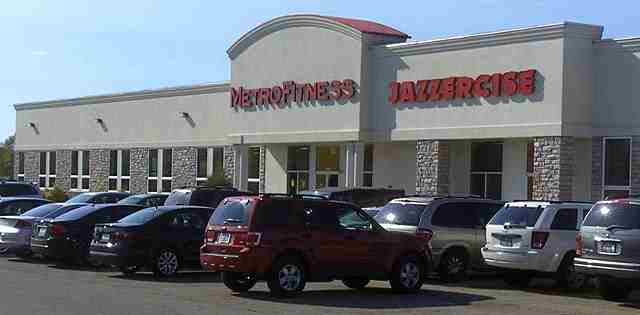MM Team Fitness
What causes muscle cramps? It may not be what you think.
- Font size: Larger Smaller
- Hits: 3477
- 0 Comments
- Subscribe to this entry
- Bookmark
I've been receiving a number of questions recently regarding muscle cramps. Below is an excerpt from an email by Dr. Steve Devor. Although running specific, this an excellent explanation of a mechanism that is rarely cited and few athletes appreciate.
One of the most common reasons for failure in the marathon, especially late in the marathon, is when athletes suffer from what can be debilitating cramps to the skeletal muscles of their legs. As many seasoned marathon veterans know, these muscle cramps can also be one of most frustrating reasons for a poor performance. Typically, when you suffer from a cramp, everything else is going pretty well. The pace feels easy, energy is good, and a new PR appears to be within reach. Then one of the three major muscles in your calf cramps, seemingly out of nowhere. Your pace has to be dramatically slowed, or even stopped for a period of time to try and stretch. And at this point a PR or strong finish is out of the question.
The performance beverage industry has done an excellent job of convincing most runners and other athletes that a lack of fluid volume or electrolyte intake is the only reason for their untimely leg muscle cramps. And for many runners the appropriate intake of fluid and electrolytes solves the problem, especially in shorter races up to and including the half marathon distance. However, for a number of runners, especially when the distance is greater than a half marathon, the intake of fluids and electrolytes are not the issue. This is because the cramping one is experiencing is not caused by those variables being off.
I believe lower leg cramps are being caused by what we term “muscle overloading” or a severe fatigue cramp. And interestingly this sort of cramping is typically not an issue for a seasoned runner until they get past approximately the 20-mile mark. Simply and concisely put, this sort of cramp occurs when the nerve signals that are supposed to inhibit muscle contraction are depressed or greatly diminished, and the chemical and electrical synapses that cause muscle contraction are enhanced or turned up. The end result is an intense, sustained, and irregular involuntary muscle contraction. This type of intense contraction is not rhythmic, like the normal contractions are during your non-fatigued running. This sort of fatigued contraction is out of phase and extremely intense; thus the cramp.
So what we need to try and understand is why this sort of a fatigued muscle cramps happen even after you have trained long hard miles in preparation for a race effort. The answer lies in a breakdown in your running form late in a long race once your body becomes fatigued. A lack of overall strength contributes greatly. The less overall functional running strength a runner has, the more likely these sorts of cramps are to happen.
An interesting study was undertaken at the 2009 Manchester City Marathon. Using a high-speed video camera, investigators carefully filmed 936 runners at both the 10K (6.2 miles) and 32K (20.0 miles) time points of the marathon. They subsequently classified the runners based upon their foot strike patterns. At the 10K mark 88% were heel strikers, 3.4% were midfoot strikers, 1.8% forefoot, and nearly 6% were asymmetrical with their footfalls. Interestingly at the 32K mark, 93% were now heel striking and no one was identified as midfoot or forefoot striking.
What this data allows us to conclude is that in the late stages of a marathon the form a runner has changes, and begins to deviate in an undesirable way from what it was at the start of the race. If you have ever carefully watched someone during the late stages of a race this is not surprising to you. Form can begin to get very different and not as smooth or strong looking. When your form begins to breakdown, severe fatigued muscle cramping is not far behind.
Let me be very clear, I do not believe a change in foot strike late in a race is the issue that leads to fatigued leg muscle cramping. But I use this example as a way to illustrate, with published research, that form breaks down for many runners late in a long race, like a marathon. And the breakdown of running form is what causes the fatigued muscle cramps runners experience in the latter miles of longer races.
When one muscle or muscle group becomes greatly fatigued as a result of mile after mile after mile of repetitive contractions, your body will always compensate by employing a sort of rerouting in order to accomplish the work that needs to be done. For example, if a gluteus muscle becomes greatly fatigued and is not firing correctly any longer your leg does not simply stop working. Rather your brain will reroute the neural signals to the muscles in your calves and they will contract with more force in an attempt to make up for the fatigued gluteus muscle. This sort of physiological mechanism is not something an athlete is even aware of, it happens seamlessly. But make no mistake it causes form to be altered, and ultimately will result in a severe cramping or even an injury.
One of the primary root causes of fatigued muscle cramping during the marathon, especially in the three muscles that comprise the calf muscles, is a direct result of reduced hip extension. Recall that the movement of hip extension is driving your entire upper thigh (and entire leg for that matter) backwards after your foot contacts the ground. The power for this movement is generated primarily from the hip extensor muscles and the gluteus muscles. And make no mistake hip extension is the single most important factor in your ability to run faster. The more powerful your hip extension, the faster you will run. Long distance runners are notorious for having very weak hip extensor muscles and gluteus muscles.
As you get further into a long marathon distance race, the forceful contractions required from the hip extensor muscles and gluteus muscles to sustain a fast pace become more difficult to generate. To compensate for the hip extensor muscles and gluteus muscles becoming fatigued, the body recruits the muscles of the calf and quadriceps to assist in the generation of necessary power to maintain your marathon race pace. Since the muscles of the quadriceps, and especially the muscle of the calves, are not accustomed to such a large workload, they quickly become highly fatigued, contract irregularly, and begin to cramp. Note this severe fatigued muscle cramping does not typical happen during long training runs because your pace is far slower than race pace. And even if running form is deviating away from ideal the slower pace of the training run is far easier for your muscles to maintain without cramping.
Another example I want to emphasize is that many runners begin to almost slouch or lean forward as they become fatigued late in a race and once again their running form breaks down. Maintaining your shoulders, back, and chest in a neutral position for the several hours that are required during a marathon is a difficult task for your core muscles. Indeed most runners lack adequate core strength to maintain an optimal upright running posture for several hours. Consequently they slouch or lean forward late in a race. The leaning forward manifests with the butt being set further back in an attempt to counter balance the forward lean of the upper body.
If you are leaning forward from late race fatigue, and your butt is further back, the result is you will almost certainly over stride with each step. The over stride causes your foot to land out in front of your center of mass, as opposed to directly under your center of mass, and greatly increases the force that travels up the leg as your foot lands. Additionally, and importantly, over striding also results in the hamstring muscles in the back of your upper leg being forced to do more work to pull your leg through since your gluteus muscles will not be activated as efficiently. The result is often severe hamstring or gluteus muscle cramping. All of this is due to a breakdown of form caused by fatigue of weak skeletal muscles.
- Steve Devor, Ph.D





